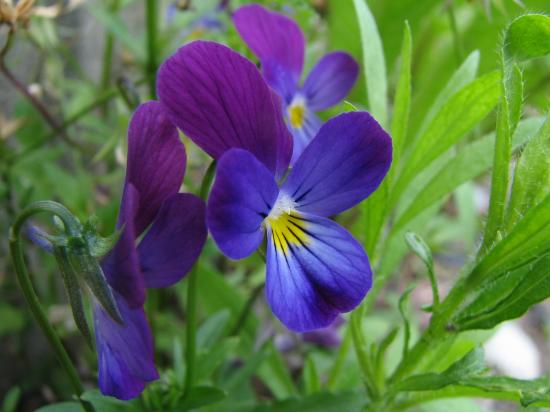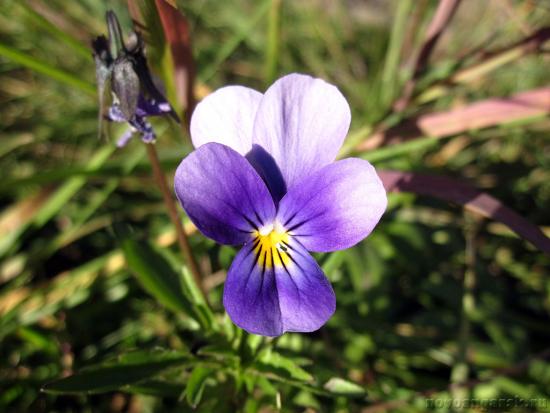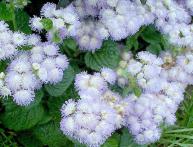What to do if violets don’t bloom: main reasons and care recommendations

Violet is a houseplant that fascinates with its beautiful flowers. There is a wide variety of species of this plant, which differ in color. For good development and flowering violets you need to take proper care of it. Many gardeners are faced with the problem of lack of flowering. What to do if violets don't bloom?
Content:
Planting violets: preparation and procedure
To get a beautiful and healthy plant, you should choose good quality planting material. For rooting, you need to take the leaves that are located in the second row. They have accumulated a sufficient amount of useful substances that are needed for active growth. You should first inspect the sheet for scratches, defects and stains. Before planting, the leaf plate should be immersed in water with potassium permanganate for a couple of hours.
This is how disinfection occurs. Next, the leaf needs to be dipped in plain water until roots form. With the appearance of strong roots, you can transplant into the soil. Adult plants should be replanted once a year.
Place a drainage layer on the bottom of the pot, then fill it with soil mixture and carefully install the root system. Pots cannot be used for landingswhere previously there were diseased plants.As a last resort, they need to be disinfected. Replanting can be carried out with either complete or partial replacement of the soil. Leaf humus, turf, compost, manure, peat, etc. can be used as a nutrient substrate. The components must be mixed with sand, vermiculite, and perlite.
Plant care
Violet does not require care, but you should follow some recommendations to avoid possible problems. The violet needs light for about 14 hours a day. When placing a pot on a windowsill, it is recommended to choose the south, west or east side. Drafts and direct sunlight should be avoided.
The soil should be moist but not wet. If there is water left after watering, it must be drained after 15-20 minutes. Water should be boiled or settled at room temperature. It is recommended to water using a watering can with a thin spout. It is important that water does not get on the leaves or in the center of the bush's growth. You cannot spray the leaves, as this can lead to the development of bacterial rot.
Violet grows well in a room where the temperature is 18-24 degrees. Air humidity should be between 50-60%. To keep the air moist, you can spray water around the plant or place a damp towel on the radiator. Like many house plants, violet needs feeding.

The plant must receive a sufficient amount of nutrients and elements. Violets are fertilized once every 10-14 days with a special fertilizer for violets or a universal fertilizer. Before using fertilizer, be sure to read the instructions, since many fertilizers have different concentrations. Violets do not tolerate excess fertilizer.
Do not fertilize the plant after transplantation, when the flower weakens and temperature changes. It is important to remember and always follow the recommendations and rules for caring for violets, then there will be no problems with growing them.
The main reasons why violets do not bloom
The main problem that novice gardeners face is the lack of violet flowering. There are many reasons why the violet does not please with its flowers. Only after identifying and eliminating the cause will the violet begin to bloom again.
Video about why violets don’t bloom:
Common reasons why violets don't bloom:
- Flaw lighting
- Nutrient deficiency
- Incorrectly selected soil mixture
- Improper watering
- Incorrect temperature
If violets have not bloomed for a long time, you should pay attention to the lighting. Due to dim light, beautiful flowers will not appear. It is necessary to move the container with the flower to a brighter place. It is important to ensure that the plant is not exposed to sunlight. Diffuse lighting is recommended. The lack of lighting in winter can be compensated for with special lamps.
To activate flowering, you can apply any complex fertilizer containing phosphorus. Violets should be grown in loose and nutritious soil. It is recommended to purchase the ready-made mixture at a specialized store. Tap water should not be used for irrigation. It should sit for several days.

The reason for the lack of colors is the wrong temperature regime. The optimal temperature for growing violets is 20 degrees. Peduncles set well in cool conditions. If you follow all the recommendations listed above, you can avoid problems with violet flowering.











Comments
My violets delight me with their blooms from spring until late autumn. I know that for abundant flowering it is necessary to plant violets in small pots, otherwise only leaves grow and you won’t get flowers. Well, the old flowers don’t bloom profusely either, so the bushes need to be renewed.
Help me resolve the issue. I can’t determine for myself why two violets bred from the same plant behave differently - and this is not the first time this has happened to me. I plant leaves, the plants take root, grow actively, then one blooms - beautifully, actively, the other - not. Next time I’ll try to take the material from the second row, as written, maybe that’s the reason?
In order for violets to bloom, they need to create suitable conditions. Firstly, the soil must be mixed: leaf soil, peat, sand and pine needles. Secondly, violets do not like direct sunlight. Well, regular watering is also required. If you comply with all these conditions, you are guaranteed year-round flowering of violets.